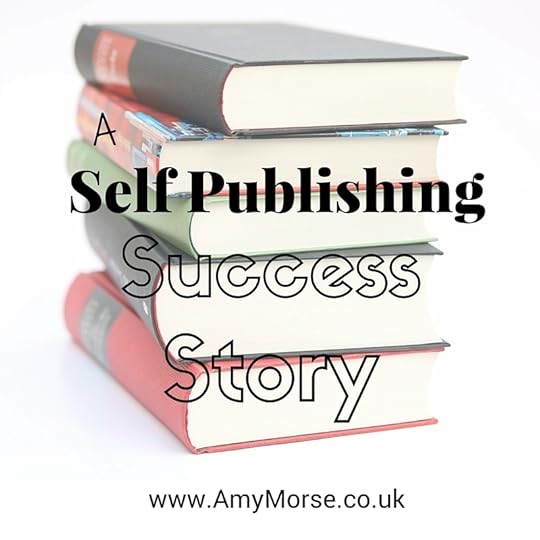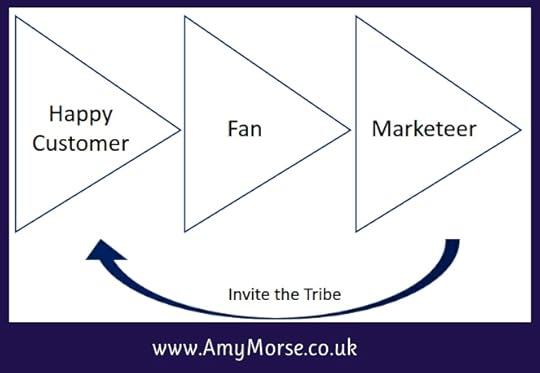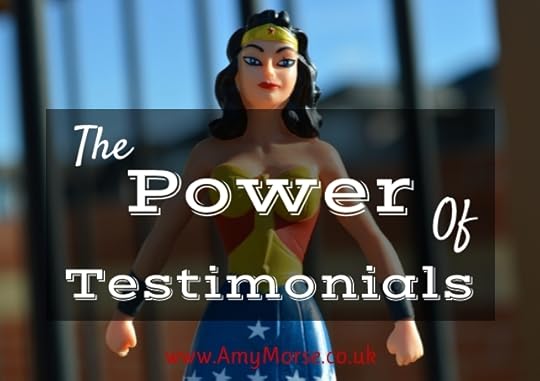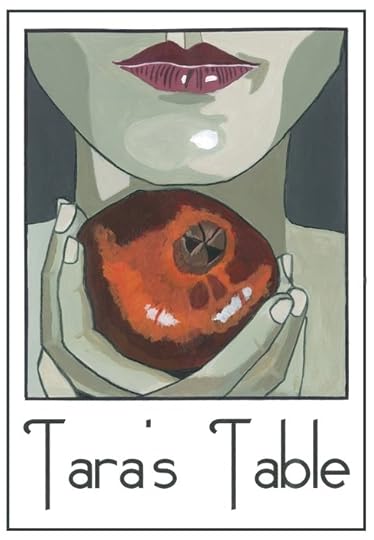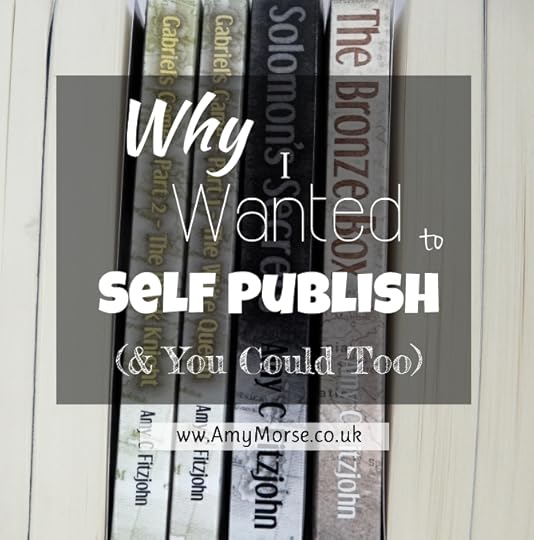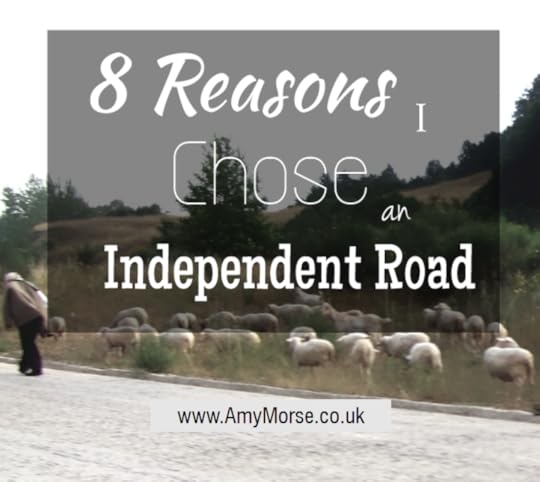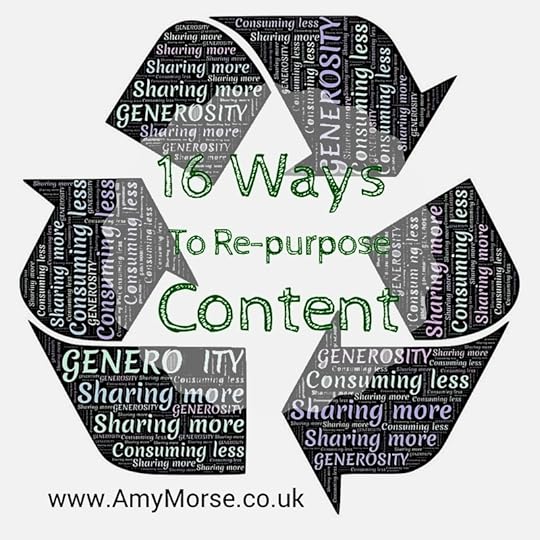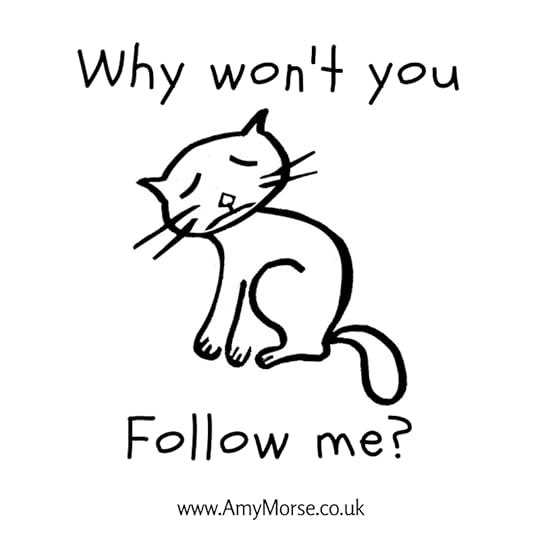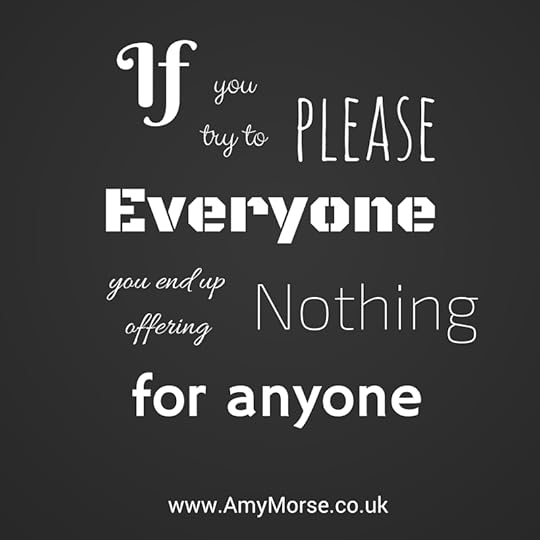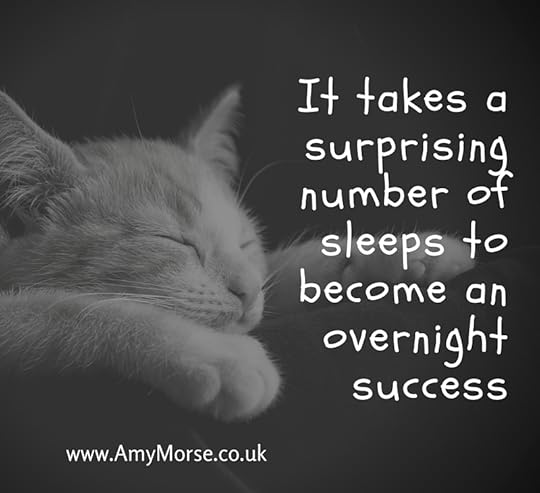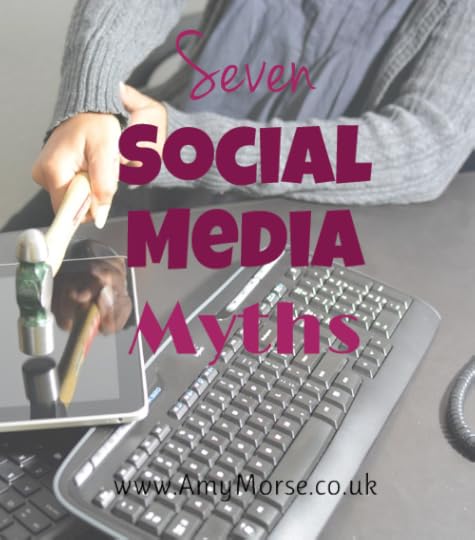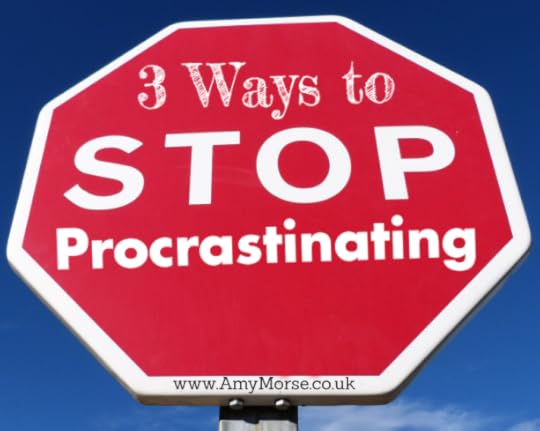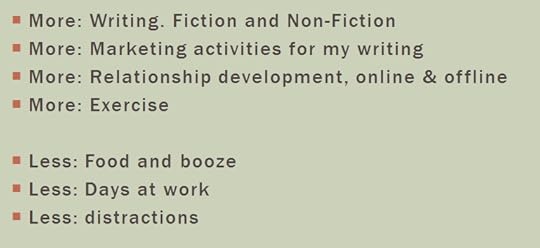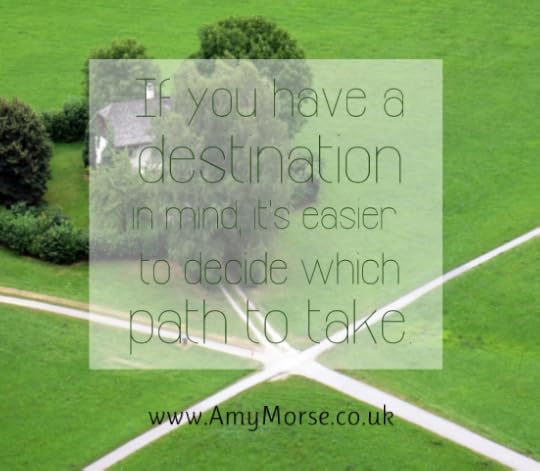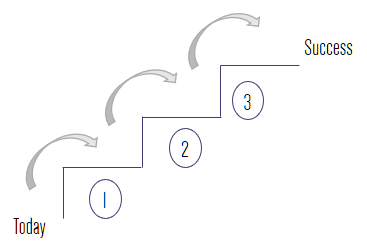Amy C. Fitzjohn's Blog, page 35
March 29, 2016
120 Blog Ideas
Coming up with new and interesting content for your blog can be a challenge.
Last April I published a blog on 20 ideas and 10 links to places to get blog content ideas:
content ideas:
http://ideaism.blogspot.co.uk/2015/04/10-links-to-blog-topic-content-and-20.html
Since then I’ve compiled a list of 120 blog ideas to get you going.
I also run regular Blogging For Business workshops in Bristol.
Download a comprehensive list of 120 Blog Ideas here: 120 Blogging Content Ideas
I’ve spent a long time researching, compiling and formatting this.
I have an expensive coffee habit so I ask for a donation via PayPal in return for this download to keep me fueled with coffee!


You can delve into the endless maze of the internet yourself, of course, and create your own list, or for a small donation you can choose what you think the time saving is worth to you…
Thank you
March 22, 2016
Self Publishing Success Story – An Interview with Maggie James
I first met Maggie when I returned to Bristol from Bulgaria a few years back, she was one of the first friends I made (outside of work).
When we met, she was writing, and running a dog walking business, but as of 2014, she is now a full time writer.
Maggie is a real inspiration to me because she’s ‘made it’ as a self published novelist.
She’s not a millionaire (as far as I’m aware!), she’s not outsourced her career to a literary agent or publisher, she’s not a New York Times Best Seller (although her books sell well on Amazon) – she writes excellent, commercial, fiction that sells and she does it with passion and consistency.
Maggie now makes her living doing what she loves, and that’s a powerful motivator for the rest of us.
With hard work, a long term vision and a businesslike approach, Maggie is living the ‘turn your hobby into a business’ dream.
We met for a cheeky mid week pint in a watering hole local to both of us, The Hare on North Street in Bedminster, and I interviewed her about her writing business, here’s Maggie’s story:
Q1) Have you always known you wanted to be a writer?“Yes, always. When I was a little girl it was all I ever wanted to do. Then it didn’t happen. I grew up and became an Accountant.
As a child I was always writing, I won some prizes and I love entertaining people with stories.
I had no confidence as a teenager and I didn’t think I could do it. I thought I didn’t have enough life experience, but that’s rubbish really, I could have written for children or young adults. The decades went by and I was in my late forties before I started writing again. I wrote some fan fiction online, got some good feedback, and it really boosted my confidence.
Around that time I was also having some problems with my employer. They wouldn’t budge, I wouldn’t budge and I began to see it as an opportunity to do something more fulfilling and enjoyable with my life. I decided to give up my job to go travelling and write a novel.
I went to South America and three months into the trip I still hadn’t written. Travelling, whilst I loved it, wasn’t conducive to writing.
In Chile I had an epiphany. I’d been reading a writer friends website regularly and she was really prolific. I was quite ashamed of myself.
I decided to travel to Bolivia and said to myself I wouldn’t leave until I’ve written a novel. I went to Sucre, a beautiful Spanish colonial city, and a found cheap hotel for $4 a night. I wrote every day, I was also approaching my 50th birthday and I thought ‘I cannot pass that landmark without having written a novel’. I finished His Kidnappers Shoes at the end of February and my birthday is the end of April.
I self published His Kidnappers Shoes, I’ve self published all my books.
Writer’s choose this route for many reasons. Maggie shares many of my reasons for choosing that route, read more here: Why I wanted to Self Publish
Q2) What motivated you to choose the self-publishing route?I met an American women in Sucre, it was in 2011, so self publishing was in its infancy. After my American friend, Molly, recommended it I looked into it. I saw that it ticked all the boxes.
Personally, at the time, I saw little point in going the traditional route and my decision has been vindicated as I am now a full-time novelist.
I decided to return to the UK, set up my dog walking business to get some money coming in, and then I’d publish.
My second book, Sister Psychopath, I wrote as part of National Novel Writing Month (NaNoWriMo).
It was such a valuable experience that the year after I wrote Guilty Innocence as part of NaNoWriMo.
I now have 4 novels and 4 nutrition books published.
The book I’m writing at the moment will be my 12th book.
I’ve bundled the first three into a box set which is proving really popular.
Q3) Are you a big reader?
Yes, enormous reader, I always have been. I read really fast and devour books.
Fitting everything in can be a struggle, especially when you’re self-employed, because not only am I writing, I’m doing all the marketing etc.
I fit in reading whenever I can. I just came from the gym now and was reading from a tablet while on the exercise bike.
Q4) Which authors inspire you in your writing?I’m in love with Stephen King. I suspect literary critics would sneer at him because he’s a popular writer, but I think he’s a genius and a master of words. He’s written over 50 books and some are really long, I think Under The Dome was 1000 pages.
I was in heaven the other day, I was in a charity shop and someone had obviously dumped a load of books. I came away with a stack of Stephen King books, some quite unusual, there were even hardbacks among them.
Q5) What advice can you offer to other writers struggling to sell their books? Be as professional as possible in every way Get the best cover you can Make sure it’s proof read If you’re no good at formatting, get someone to do it for you Never stop learning Read books like Stephen King’s On Writing.
You can’t just put a book on Amazon and hope it will sell.
I think cream floats to the top. Also, play the long game, think of it as a long-term career.
Most of the successful authors I know didn’t start earning any money until the fifth book, some say the tenth book.
Whatever you’re writing, you’ve got to approach it in a business-like manner. People are not stupid, it needs to be good, anything else is disrespectful to your reader.
Q6) What are you working on next?My sixth fiction title, Burning Obsession. The cover is done, it’s written in draft form.
I’ve been procrastinating a bit because there’s so much to do. I have all the notes back now and have been knuckling down this afternoon.
I’ve joined the monthly positivity Meetup group. Each month I set a goal and I’m accountable to the group by the next month. In April I have to get a reasonable first draft done.
I’m also getting my books converted into audio format using Audible ACX. It’s every bit as efficient as Amazon. I’ve got a voice actor to narrate them, it’s proving much easier than I thought.
I want to publish a book of success stories with contributions from other writers I’ve approached other authors and I’m compiling the submissions.
(I’ve contributed)
Not sure what format it will take yet, I could just put the stories in the order they come, or I could chop them into sections covering different topics, for example, time management – with lessons from the contributing authors who’ve struggled with it.
I want to encourage authors and might offer the book for free on my website.
I’m also looking at translating my books into Spanish, because I speak Spanish. It’s a beautiful language and it would open up the Latin American market. I’m looking at BabelCube, they link up translators and novelist. I’m going to have a go at translating it myself, but as I’m not a native Spanish speaker, I need some professional input to give it that Spanish feel and voice, then I’ll give it to some native Spanish speakers to read.
Q7) If you could offer one piece of advice to your 16-year-old self, what would it be?Believe in yourself.
Most 16 year old’s have all the swagger, and I was no different, but underneath I had no confidence in myself and my writing.
I’d say go for it, believe in yourself, and just do it.
Don’t wait for years to get writing. Having said that, things might have been very different back in my twenties. We didn’t have self-publishing, we didn’t have Amazon. I might have gone round and round being rejected by agents and publishers, got disillusioned and earned a pittance.
I turned down a publishing contract a couple of years ago. It’s nice to be asked, but I looked at it and said to myself ‘Why would anyone sign something like this?Why would I give you 90% of my sales?’
Unlike most publishers, they were prepared to give me some help with marketing, but even so, it was a bad deal.
I think writers have been treated badly for a long time. Often people think a traditional publishing contract is the Holy Grail, and have no idea of the huge changes that have swept through the industry in the past few years.”
I ran out of questions at this point, we chatted for a bit ,then Maggie said, “I have a question, would you like another beer?”
Best question all night!
More about MaggieMaggie James is a British author who lives in Bristol. She writes psychological suspense novels.
The first draft of her first novel, entitled His Kidnapper’s Shoes, was written whilst travelling in Bolivia. Maggie was inspired by an impending birthday along with a healthy dose of annoyance at having procrastinated for so long in writing a book. His Kidnapper’s Shoes was published in both paperback and e-book format in 2013 and has been followed by three more novels and a novella. Maggie has also written a book for would-be authors, entitled Write Your Novel! From Getting Started to First Draft. She is currently working on her sixth fiction title.
Before turning her hand to writing, Maggie worked mainly as an accountant, with a diversion into practising as a nutritional therapist. Diet and health remain high on her list of interests, along with travel. Accountancy does not, but then it never did. The urge to pack a bag and go off travelling is always lurking in the background! When not writing, going to the gym, practising yoga or travelling, Maggie can be found seeking new four-legged friends to pet; animals are a lifelong love!
March 11, 2016
Who’s Your Number 1 Fan?
Marketing is a murky business. There are so many things to consider, so many options to raise awareness of what you do, it can be overwhelming.
How on earth do you persuade people to buy from you instead of the next business?
Essentially, the only reason for your business to exist is if it solves someone’s problem.
Ask yourself: what problems does your business solve and who has those problems?
That someone is your customer.
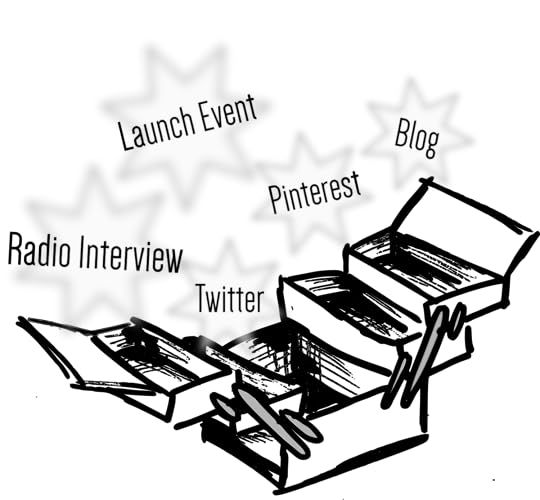
The promotional tools in your marketing toolbox
Before you can make any meaningful and effective choices about what promotional tools to use from your marketing toolbox to get their attention, first you need to know who that someone is.
This goes much deeper than some meaningless sweeping statement like, for example:
‘Middle class women between the ages of 25 and 60 living in the South West‘.
That’s all well and good (if you have the marketing clout of a big supermarket), but for us mere mortals it’s much too general.
How can you possibly design an effective promotional strategy that appeals to everyone on that huge scale? (Especially if it’s just you on your own!)
Your ‘women in the Westcountry‘ all have different backgrounds, come from different generations, with different needs, wants, aspirations, motivations, financial restrictions, priorities etc.
If this were a marketing exam you’d get:
C-
You’ve not failed, but your not quite getting it!
Instead of that vast range of people… (a quick Office of National Statistics search reveals there are around 1.5 million ‘women in the Westcountry‘) choose one person on that scale and make it all about them.
A simple probability assumption means that one person will share similar characteristics with tens of thousand of other people.
10,000 raving fans who come back over and over again is much easier to manage and maintain than a disparate group of wishy-washy people who may or may not be loyal to you. You can use your resources to keep your 10,000 happy instead of constantly trying to warm up tepid leads from a massive stagnant pool of potential customers.
Imagine the one person as your number 1 fan.

Who’s the ideal customer for your small business?
Save yourself a lot of time and money buy targeting ‘the one’ instead of the many.
Get it right for them, and they’ll bring their tribe with them.
Top Tip:
Give them a name…yes, your ‘semi-fictional’ fan is your litmus test before you make any marketing decisions.
I’ve visualised the number 1 fan of my books and call her ‘Alison’.
I’ll ask myself things like:
Would Alison follow that blog? Does Alison read that paper? Will Alison be listening to that radio interview? etc.It’s okay to have a couple of different fans. For example, Alison is not the number 1 fan of my business skills workshops (that would be ‘Michael’).
Try it! Work through the process that creative writers use to create fictional characters in my next workshop, ‘Create Your Customers‘, and discover your own protagonist in the story of your business.
Friday 18th March 2016, in Bristol. Book NOW : Powered by EventbriteMarch 1, 2016
The Power of Testimonials
The world of marketing is constantly evolving and shifting, but one indelible thing remains…
Word of mouth is still the most powerful and effective driver of our buying decisions.
This is where social media can amplify your message.
Preferably, that message should come from someone else.
Testimonials and reviews from your customers are the best social proof you can get.
If you >>>fast forward >>> your happy customers, to fans, then to your own personal marketeers, they’ll invite their tribe.
But don’t just take it from me.
Tara Clist, of Tara’s Table, is a passionate foodie turned small business in Bristol. I met her at an networking event last year and I’m proud host her as a guest this week.
Here’s her take on the importance of getting testimonials from your customers:
The Importance of TestimonialsIf, like me, you have your own business, you will always be thinking of ways to attract more customers – who doesn’t want that? Certainly no-one I know!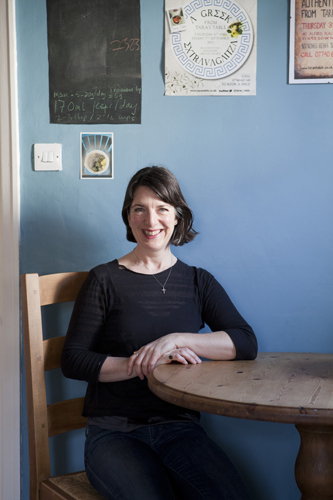
One sure-fire way to do this is to be good at what you do, because guess what gets more business without fail?
People raving about their experiences.
One effective way to obtain this information and get it out there for everyone to see, is to ask them politely for a testimonial that you can include on your website or drip feed out onto social media.
Bear in mind that you should always check with your customer that they are OK to share this information.
Try having a system in place to ask them so that you don’t miss out. (I have a template I send off with invoices which includes a short paragraph asking them if they’d write a few words of feedback.)
The problem is, everyone is busy and promises can be forgotten.
In business, you should never be afraid to ask somebody or give them a gentle nudge to remind them of what they kindly agreed to do.
People inherently like to help others so they are likely to come up trumps eventually.
They say the proof of the pudding is in the eating.
This is something that’s central to my private chef and corporate catering business, Tara’s Table, that I started 6 years ago in 2010 after 8 years of cooking in restaurants.
A restaurant is a literal shop window that customers – and more importantly, potential customers – pass, so they know it is there.
Then how do people know that it’s a good place to go?
Word of mouth, because everybody loves to talk and share their experiences, the good, the bad and the ugly.
“Where is the latest place to go and eat? Have you tried it? Is the food good? Are they good with kids? How’s the service?…”
If you don’t have a shop window, you have to get the word out there somehow, so be brave and ask but don’t even think about making them up – I have had an instance where a potential customer called the person who had written a testimonial to check, so beware!
If you are answering a customer enquiry, why not include a snippet of a relevant testimonial at the end of the email? Whatever you do, get clever, don’t be shy and never give up. Good luck!
Find out more about Tara’s private chef business: http://www.tarastable.co.uk/
Follow her on Twitter: @Taras_Table
Like on Facebook: Tara’s Table
Get ‘Amy Morse, Authorpreneur’ blog updates straight to your inbox with Bloglovin’: Follow
February 23, 2016
Why I Wanted to Self Publish (& You Could Too)
I responded to a comment on a fellow writer friend’s Facebook post the other day in which someone had said “You’d have to be desperate to self publish with Amazon“.
I couldn’t resist the urge to challenge them on their assumptions about self publishing.
I’ve published 3 fiction novels and 2 non-fiction books on Amazon (and counting) and I assure you, it was not out of desperation – quite the opposite in fact!
For me, self publishing was a business decision and I’ve built my business around my books.
Like everything else, the book industry is changing. The freedom of the digital space has allowed independent authors to operate outside the confines of the traditional publishing industry like never before.
The Big 5 publishers have been accused of being too slow to react to a changing market, resistant to change and of being complacent.
Ultimately, I’d like to be taken on by a big publisher, but not in order to be published, and not yet. I want to be approaching them from a position of proven publishing success, something they can help me to amplify and build on.
There’s never been a time in history of greater freedom for writers, whether it’s the immediacy of publishing through blogging and creating web content or being able to self-publish.
When I completed The Bronze Box in 2012 I researched the different options available to get it onto the shelves, digital or otherwise.
I quickly realised I would struggle to put a convincing business case to a traditional publisher to take on my book because I had no credentials as a writer. I’ve never won any competitions (I’ve not entered any!), I had no previous work I could put my name to, I couldn’t prove I had a following of readers and fans, I don’t have any friends or contacts in the publishing industry and I’m not a celebrity.
I was under no illusions; being taken seriously by a traditional publisher was unlikely for me.
That wasn’t going to stop me. Gone are the days when self-publishing was the last resort of vain writers who weren’t good enough to attract a traditional publisher.
Independently published books now represent a significant, and increasing, share of the global book market.
There are pro’s and con’s to both self publishing and traditionally publishing your book.
You need to make a decision in the best interests of your business and career goals.
Here are the 8 reasons I chose an independent road:
1) I wanted validation and social proof. I needed to get some credentials as a writer, I wanted some feedback and to build up an audience.
2) I wanted something I could build a business around. I’ve been part time self employed for years. I’ve been working towards being fully self employed and publishing books gives me the freedom I crave. My goal for the future is to be able to live and work anywhere I want to, to be beholden only to myself – but I also like life’s little luxuries. Trudging around carrying my life in a backpack, relying on the hospitality of others and staring longingly into the windows of restaurants knowing I could never afford to eat there, is not enough for me.
3) I wanted to keep the profit. I have several traditionally published writer friends who’s royalty cheques are so minuscule they might as well not have bothered. There is a long held belief that traditionally published authors have all their marketing handled by their publisher. This simply IS NOT TRUE and NEVER has been! Yes, a publisher will do a certain amount, but in an increasingly competitive marketplace their budgets are even more squeezed. Yes, it gives you a boost and help to have others on your side with connections, but you still have to take responsibility for your own marketing if you want to be a successful writer. It is in your best interests to take this seriously and do everything you can to market your own work. Better sales, means more likelihood of better publishing deals and more money in your pocket. So, I asked myself; hang on, if I’m doing most of the work, how come the publisher gets most of the money? I’m willing to put in the work, but I want to reap the rewards of that myself.
4) I wanted some control over the pricing of my books. There has been an ongoing dispute between top publishing houses and Amazon about the pricing of eBooks. This report by Authorearnings.com discusses how big publishing houses artificially inflate prices to the detriment of authors and themselves because their motivation is not to serve their customers (readers and authors) but to try to damage their competitors (Amazon). Self published eBooks are outselling traditionally published eBooks on Amazon because independent authors set their prices. Having control over the pricing means I can run and control my own marketing campaigns. (Read the report HERE)
5) I wanted to get the book out quickly. By doing it myself, I can respond to the market and set my own lead times. I don’t have to spend months querying agents and publishers, then more months re-writing the book to suit the publishers requirements. Before I know it, years of my life have sailed past and I still don’t have a book out. I wasn’t prepared to put that much of a brake on my career and business goals.
6) I wanted to maintain creative control. It’s my book, dammit, I want to maintain control over the story, the structure and I want to own all the rights to it. I don’t want to be strapped into publishers clauses that prevent me from doing what I want to with my words.
7) I wanted to test out ‘being a writer’. It’s one thing to have a hobby, quite another to turn it into a business. I wanted a low risk way to test the market and test myself. I didn’t know if I actually wanted to spoil my beloved hobby by making money from it.
8) I wanted to see if I could. A personal challenge is a great motivator for me. I wanted to see if I was capable of getting a book to market and selling it. My goal for The Bronze Box was to sell 1,000 copies in three years. I doubled this in half the time and it was enough to convince me I did want to be a writer and I was capable of doing it.
These reasons seem to be common among other independent authors. I like this article in Black Fox Literary Magazine:
Selfies vs. Traditional Publishing – Which Style Fits You Best?
But self publishing isn’t just for fiction writers.
Self publishing presents entrepreneurs with an excellent opportunity to build authority and influence by actually doing the one thing so many people want to do, but never do – write a book!
There is still a good deal of pomposity around self publishing, but ultimately, as a writer, you can choose to be bitter and resentful that others had the courage to go it alone while you remain ‘undiscovered’ or you can take a risk – because business is really just about taking calculated risks – you never know, you might even make some money!
February 9, 2016
16 Great Ways to Re-purpose Content
Every time you write a piece of content you’re creating something new, something with the potential to use over and over again.
I recently told a client I was lazy. He gave me a crooked look and said; “Way to sell yourself, Amy?”
…I’m lazy because; I like to have simple systems and processes in place so I can get stuff done, quickly and effectively, leaving room in my day to do what I enjoy. There’s no sense in constantly reinventing the wheel. I want to do something once then re-use, re-purpose and recycle it (without being repetitive).
This is what I do for my clients through; workshops, content sharing, public speaking and working 1:1 to help them be more productive in their businesses.

Why re-invent the wheel. Recycle, re-use, re-purpose.
When I create a new piece of content, I look for ways I can use that knowledge in different ways – wheels aren’t just for wagons, after all.
Here are 16 ways to make the most out of that piece of content.
It’s not just a blog post, it can also be…
Workshop handouts The basis of a face to face workshop A flow chart Built into an online course Visually represented as an infographic Recorded as a podcast Presented in video form Turned into a cartoon A printable Made into a quiz Gamified Revisited and referenced into an updated post Used as a checklist Presentation slides to deliver as a talk Expanded on to form the basis of an eBook Compiled, along with other posts, into an eBook. I’ve done this with ‘Authorpreneur Almanac’.I took 52 of my best blog posts and added some new content to create a once a week digest of tips and inspiration. Get the eBook HERE
February 4, 2016
To Follow or Not To Follow… That is the question?
Twitter is my favourite social media channel for business.
It’s quick, simple and allows me to interact with people I would never have the opportunity to reach otherwise. I’ve even had actual conversations with celebrities and people I admire – that’s just awesome!
Twitter is a great connector and fantastic medium for sourcing and sharing valuable content.
Logically, the more followers you have the more likely people will be to see what you are sharing.
However, the idea is not to collect thousands of followers, there’s more to Twitter than just the numbers.
It’s about quality, not quantity.
It becomes an effective tool for sharing and communicating when you have quality followers, and a good place to start is to follow people relevant to you.
That is; people who are likely to be your customers, people you are competing with, people you want to develop a rapport with, people you are collaborating with and people sharing industry relevant information.
As with any marketing tool, the key is in knowing who your target audience is. Being really specific and being seen as an expert in that niche will win you followers and fans.
But following people will not necessarily guarantee a follow back.
Here’s 4 top reasons why people aren’t following you:
#Using #Too #Many #Hashtags #on #your #Tweets #makes #them #hard #to #Read and is just #annoying… If I can’t read your messages, why would I want to follow you?
Always include a hashtag in a Tweet to increase the likelihood of it being seen, but 2 -3 hashtags max.
Space them out and fit them naturally into the Tweet rather than tacking them on the end, it reads better.
2. Constant Shameless Self Promotion
There’s an 80/20 rule with social media in general.
80% of your content should be sharing, communicating, generously offering knowledge and saying nice things about other people.
20% can then be subtle self promotion.
I’ve noticed a lot of writers in particular get this ratio wrong. Their feeds are full of nothing but shouting about their book. Boring.
Put you’re megaphone away, it’s annoying.
3. Follow Farming
With tools like ‘Tweepsmap’, it’s obvious when someone follows you just so you’ll follow them back.
A weekly email update will show you who followed and who unfollowed and it doesn’t take much detective work to notice the folk that drop in and drop off quickly.
Personally, I think following random people with the sole purpose of boosting your numbers is just rude. Follow people because you are genuinely interested in them, otherwise you’re not authentic.
The point of following people on Twitter is not to get them to follow you back. If what you’re talking about is relevant to them they’ll follow back, if not, they won’t and that’s OK.
When you have a maximum of 2,000 people you can follow (until you have more than 2,000 followers yourself), why use up your allocation with irrelevant content?
4. Lack of Content
People will follow you if you generously share useful content, have something worthwhile to say, and if you Tweet regularly.
An account with no recent activity looks like you’re no longer in business, people won’t waste their follow allocation on a redundant account.
If all you do is retweet other people’s stuff without saying anything yourself, others will soon get tired of your feed and unfollow.
Please don’t take it personally…
If I follow you and you don’t follow me back, I won’t be offended.
I only follow people that are sharing information that’s relevant to me, with millions of Twitter accounts, I don’t want to fill my feed with inappropriate content.
In business, you can’t please everyone and shouldn’t try to.
If you’re not interested in what I share, that’s OK.
It takes time to build up a base of quality followers, never be tempted to buy them – don’t encourage the spammers!
The more specific, the more relevant, the more you interact, the more useful and generous you are with what you share – the more likely I am to follow you back and want to stay in contact with you.
Contact breeds rapport, rapport breeds trust and trust leads to sales – that’s how it works and why Twitter is such a valuable tool for marketers.
For more quick tips on making the most out of Social Media, check out this low cost eBook:
‘Operation Author: Let’s Get Social’
January 25, 2016
7 Social Media Myths
After Marc Guberti’s great blog post, last summer I’m back on the topic of social media.
I’m not claiming to be a social media guru, but I have written several features on the subject as well as run workshops on:
‘Introduction to Social Media’ ‘Twitter for the Terrified’I’ve put together some of my best blog posts, tips and content in this short, accessible and low cost eBook:
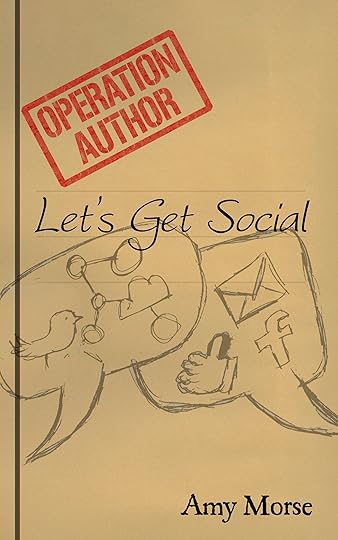
Social Media tips eBook, out now on Amazon
Here’s a sneak preview – this post and many others are featured in the book:
7 Social Media Myths 7 Social Media MythsLet’s get some perspective…social media is NOT the marketing panacea. Social media is only ONE tool in your marketing toolbox.
There are many myths about it too and I’m about to break 7 of them:
Myth 1: Social media sells stuff.
Wrong – Social media does not sell stuff. That’s not how it works. There is an 80/20 rule with all social media: 80% sharing content, engaging with people and saying nice things about them, 20% self-promotion.
Myth 2: I have to be on all the social media channels.
Wrong – choose the ones that your customers are on. Choose as many as you can realistically manage: 2 – 3 max.
Myth 3: I need as many followers as I can possibly get.
Wrong – it’s better to have a small number of engaged followers, than thousands of duff ones.
Myth 4: I have to be on it all the time.
Wrong – Be regularly and consistently present. Studies show that 3 Tweets a day at regular intervals will reach 30% of your audience. Facebook updates can be weekly. It’s better to be organised and be on social media for a few short bursts a week than ‘feast or famine’.
Myth 5: It takes too much time.
Wrong – It takes as long as you allow it to. You control it, not the other way around. Plan in short bouts of activity using scheduling software such as Hootsuite or Tweetdeck (learn more about this in my workshops). That way you only need to dip in weekly, spend half an hour scheduling some pre-planned content and respond quickly to anyone who communicates with you directly. Set up your profiles so you get a notification when someone contacts you, deal with it and then get on with your day job once more.
Don’t waste time treading the social media stepping stones.
Myth 6: No one is interested in what I have to say.
Wrong – of course they are, you’re full of stories! Have a plan for your content in the way you would plan any project. Share news, facts, images, blog content, inspiration, videos, quotes etc. But whatever you do, don’t just post ‘buy my thing’, copy-paste-repeat – we all hate in your face advertising!
Myth 7: I can get famous on social media.
Wrong – Anyone famous on social media was famous before. Social media is a communication tool not a place to show off to the crowd.
Like these tips and want some more?
Operation Author: Let’s Get SocialI’m running workshops in Bristol in 2016 on various aspects of business and marketing – sign up to the newsletter for monthly updates here
Or email me for details: amy@TomCatDesigns.co.uk
I’ve compiled my most popular posts about Social Media in this eBook, available now from Amazon.
Feedback and reviews always appreciated. A bargain, at under £1.50…
January 13, 2016
3 Ways to Stop Procrastinating
It takes time to shake off the dust from a holiday.
I knew December would be a quiet month, experience has shown me no one is interested in going to a workshop in December.
I spent the first couple of weeks of December following up with lots of coffee meetings and the latter half making cards and hampers for people for Christmas, then putting my feet up – with sporadic feasting and drinking (and being a Christmas Birthday Babe).
It’s taking me a while to get back into the swing of things, having got out of some of my healthy habits (I wrote about this last year).
Inevitably, I’m orbiting my comfort zone of procrastination.
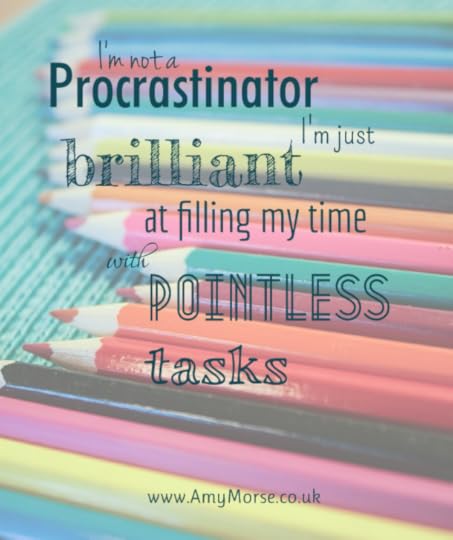 Suddenly, making a fuss of Homer…
Suddenly, making a fuss of Homer…

Homer Morse, the cantankerous 18 year old cat
…or emptying the dishwasher, have become priorities.
I wouldn’t advocate procrastination; however, I did recently write about how you are more creative than you think and that sometimes procrastination can be part of your process.
Don’t beat yourself up about it, but recognise when you’ve strayed so far down a path of pointlessness that you need to have a word with yourself.
Hearing about this article in the Telegraph on BBC Radio Bristol (I’m a regular guest) got me thinking.
The author suggests strategies to improve your working day. One of which is note three positive things that have happened in your day.
I love this three-a-day approach.
Today my 3 are:
Watching the golden winter sunlight dancing over the surface of Bristol harbour Buying a new type of goat’s cheese in Lidl and discovering how delicious it is – nom nom My 16 year old Clio (Lizzy Blue – my scruffy little tireless workhorse) going in for an MOT and the work costing £84 at Mr Clutch – I was expecting hundreds, especially considering there was a puddle behind the drivers seat!But the phrase that caught my eye in the article was ’email grazing’…
Here are 3 things I’m going to stop doing to curb my procrastination habit:
1) Stop email grazing
Close my email so it doesn’t beep at me every time I get a message and I take an unnecessary diversion into my inbox. Instead, I’ll check my email at intervals: morning, afternoon and before I sign out for the day.
2) Stop treading the social media stepping stones
Like email, I dip in and out of social media intermittently throughout the day. It usually follows an email beep to tell me that someone has commented on a Facebook thread, retweeted me or repinned a pin.
Before I know it; I’ve been sucked into a political debate on Facebook, sent out a projectile vomit of retweets or found some lovely recipes for orange polenta cake then created a whole new pin board of polenta recipes!
3) Stop reacting to my phone
I don’t get many phone calls, but when my phone rings, I’ll drop everything to answer it and inevitably it’s someone trying to get me to make a claim for a mythical car accident or non-existent PPI. Instead, I’m going to keep my phone on silent when immersed in a task then check it at intervals. If someone really wants to talk to me they’ll leave a voicemail, text or email me. And if it’s my husband, he’ll do all three then call the landline… maybe I’ll pick up for him (he’ll probably be in Lidl asking me if I’ve run out of goat’s cheese!)
January 2, 2016
New Year’s Resolutions for your Business
Happy New Year!
The tradition of setting new year’s resolutions can be traced back into prehistory.
The Babylonians made promises to their gods at the start of each year, the Romans began their year making vows to the god Janus (January is named after Janus) and medieval knights would reaffirm their vows of chivalry after Christmas.
We’ve all set new year’s resolutions and not stuck to them, but we have also kept some of them.
Last year I set an overall theme for my resolutions: Less is more
And this is what I broke it down into:
I achieved all of them except ‘More: Exercise’ and ‘Less: Food and booze’…
Yep… carrying those ones over (again) – what can I say; I love wine and food and I hate the gym!
Setting a resolution for yourself is the same as setting a goal. Although we set goals with an intention to achieve them, it’s not just about the goal itself and whether you succeed or fail in the time frame allowed (in this case, a year) – It’s about committing to a decision and having something to work towards.
If you have a destination in mind, it’s easier to decide which path to take.
If you write them down and share them, you add the element of accountability and are far more likely to get it done than if you make some vague, non-specific promise to yourself.
I wrote a blog on How to Decide What Goals to Set at the start of 2015
1 – Start with a bigger objective – something to achieve over the course of a year
2 – Now break that down into smaller steps (ie: something you will do every month towards that goal)
3 – Then break this down into small daily tasks
Work through the baby steps and eventually, little by little, you’ll get there.
Deciding on some goals for your business then breaking them down into practical actions is the basis of a functioning business plan.
A business plan is not just some wordy document you write to impress the bank, it should be a working document, a road map – it’s a way to stay focused and keep track of what you achieve in your business, think of it as the instruction manual for the job you’ve created for yourself.
This year, I’ve set a few resolutions, some business related some personal.
My business goals for 2016 are:
Generate a full time income from my business Get 2 -3 regular corporate freelance contracts (1 should be signed off next week, fingers crossed) Publish another fiction title (‘Gabriel’s Game, Part 2: The Black Knight’ – the final part of the Sheridan and Blake Adventure Series is currently out with Beta Readers)The series is currently on sale for January on Amazon
On a personal note, I turned 39 on 29th of December and have compiled a list on my Idea’ism blog of 40 things to do before I’m 40.
I also plan to read 12 books this year, 1 a month – it may seem like a small target but I take ages to read an entire book. I love reading, but I’m a slow reader and have to absorb every word. It’s an exhausting process and therefore needs to be worthwhile – I’ve started far more books than I’ve ever completed, so reading 12 books will probably involve starting 20 books!
What are the new year’s resolutions for your business?Keep yourself on track and achieve more of what you want by setting yourself regular goals.
Learn some creative techniques to manage your time better and set sensible goals in the first of my workshops in 2016 – Achieve More in 2016
Powered by Eventbrite

